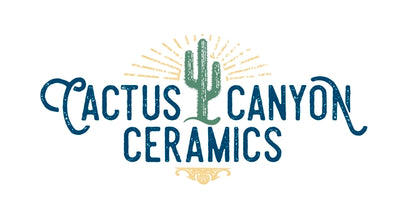Is extra virgin olive oil like wine? Side by side in a blind taste test, would one olive oil rise to the top? If so, what would be the characteristics of that olive oil?
After living in Southern Spain for seven years where extra virgin olive oil is a part of every meal, I decided to investigate a little bit about how to identify a top quality olive oil. Here in Andalusia, every restaurant has their own source of olive oil and many restaurant owners have their own, small olive orchards and through a local mill or a cooperative, they make their label of olive oil. Honestly, I find that a vast majority of the extra virgin olive oils in Andalusia are top quality. And in reality, quite different from the olive oil I have tried in the United States, where as much as 69% of the extra virgin olive oil imported and sold does not meet the specifications of “extra virgin olive oil”.
Over the past year or so, I have been visiting olive oil mills here in Andalusia. I am working towards offering a top quality, white label extra virgin olive oil to sell under the GringoCool brand in the United States. It is complicated. There are more than 300 varieties of olives in Spain. In Andalusia, seven or eight varieties are used for most of the production of olive oil. Some of the varieties most used include hojiblanca, piqual, arbequina, picolemon, ocal and manzanilla.

Just for fun at a recent Sunday brunch, I asked several of my friends to take a blind taste test of seven olive oils. All of the participants live in Spain and are accustomed to quality olive oil so I wondered if they would find that some of the samples had a superior taste?
The samples I used for the taste test were collected during visits to the local olive oil mills. The samples used were:
#1. An organic or ecologic extra virgin olive oil from a Cordoba area mill.
#2. An extra virgin olive oil from a mill near the city of Huelva that is currently being imported into Florida and sold at restaurants.
#3. A late harvest hojiblanca extra virgin olive oil from a Cordoba area mill.
#4. An “olive oil” from a old style mill, which uses older equipment for sorting, crushing and storing the olive oil. Clearly, a lower quality oil.
#5. A picual extra virgin olive oil from a Cordoba area mill.
#6. An early harvest hojiblanca extra virgin olive oil from the same Cordoba are mill as the late harvest hojiblanca.
#7. A late harvest arbequina extra virgin olive oil from a Cordoba area mill.
In preparation for the taste test, I arrived early to the brunch and labeled and numbered the sample oils and corresponding dipping bowls. Also, I cut up a large loaf of fresh, Italian bread for the taste testing.

Each of the participants was provided a simple form to label from 1 to 10 their impression of appearance, smell, texture and taste. Very quickly we decided to reduce the scope of the testing to only the taste. Truth be told, the difference in appearance, smell and texture were hard to determine because I presented the oils in brightly colored, hand painted, Spanish dipping bowls. So, we went with taste only. Everyone sampled each of the olive oils, using the Italian bread to clean the palate.
Results:
 The results were very clear. Two olive oils rose to the top. The late season hojiblanca and the late season arbequina extra virgin olive oils were the clear favorites among all of the testers. The olive oil that was least liked and two people described as greasy was the “olive oil” that came in a very pretty bottle from an “old school” mill, where poor technology is coupled with a large, regional circulation in supermarkets. I was somewhat surprised that the ecological extra virgin olive oil also clearly came out on the bottom, a conclusion which was reinforced by tester comments after the reveal.
The results were very clear. Two olive oils rose to the top. The late season hojiblanca and the late season arbequina extra virgin olive oils were the clear favorites among all of the testers. The olive oil that was least liked and two people described as greasy was the “olive oil” that came in a very pretty bottle from an “old school” mill, where poor technology is coupled with a large, regional circulation in supermarkets. I was somewhat surprised that the ecological extra virgin olive oil also clearly came out on the bottom, a conclusion which was reinforced by tester comments after the reveal.

Conclusions:
Of course, the blind taste test was not, in the foggiest sense, a scientifically valid exercise. But it was really interesting to see what people thought. Based on my conversations with mill operators and the results of the taste test, some of the conclusions I am working towards include.
1. Extra virgin olive oil is like wine to a large degree. The quality of the olive oil depends upon the quality of the fruit, the quality of handling and the expertise of the producers.
2. A lot depends upon the knowledge and experience of the mill “catador” or taster who classifies the olives on the tree and organizes the sequence of the harvest, among other things.
3.The quality of the fruit is paramount to a superior product. A plump olive, produced in ideal conditions of sun, soil and moisture will yield a top quality oil when crushed. A shriveled up olive, not so much.
4. Olive oils offered by large producers are not the same quality as those offered by smaller producers. I feel this is true because producing volume seems counter productive to producing a top quality oil. The control of harvesting and the mixes of olives may be two of the biggest challenges that large producers face.
5. The varieties of olives and the mix of varieties used for producing the oil is important. For example, none of the tasters were drawn to the picual variety of olive oil. When I talked to producers, they characterized the picual variety as “fuerte” and “picante” (strong and spicy). I got the impression the picual variety, with a bit of alchemy, might be used to add pungency to an otherwise bland harvest.
6. The time of the harvest will influence the quality of the olive oil. I think like any harvest, the early fruit may be a bit green, and the last fruit harvested, a bit overripe. The timeliness of the harvest can impact the quality of the olive oil.
7. Most mills have the capacity of producing a top quality olive oil. Variables such as weather, harvest coordination, speed of processing and quality storage are critical variables in the production of a top quality olive oil.
8. Some regions will produce better olive oil than others. As stated before, soils, sunshine, precipitation and human expertise are primary elements needed for producing a top quality olive oil, and some regions are more blessed than others in this regard.
—————–
Please feel free to add your opinion, observation or conclusion in the comments. This is a work in progress and I hope to have many opportunities to learn more about extra virgin olive oils. Your input is welcome. Thanks for reading – Steve
Below are several photos taken at a Cordoba area olive oil mill.

Green Gold! Fresh Extra Virgin Olive Oil!



 !!!
!!!


